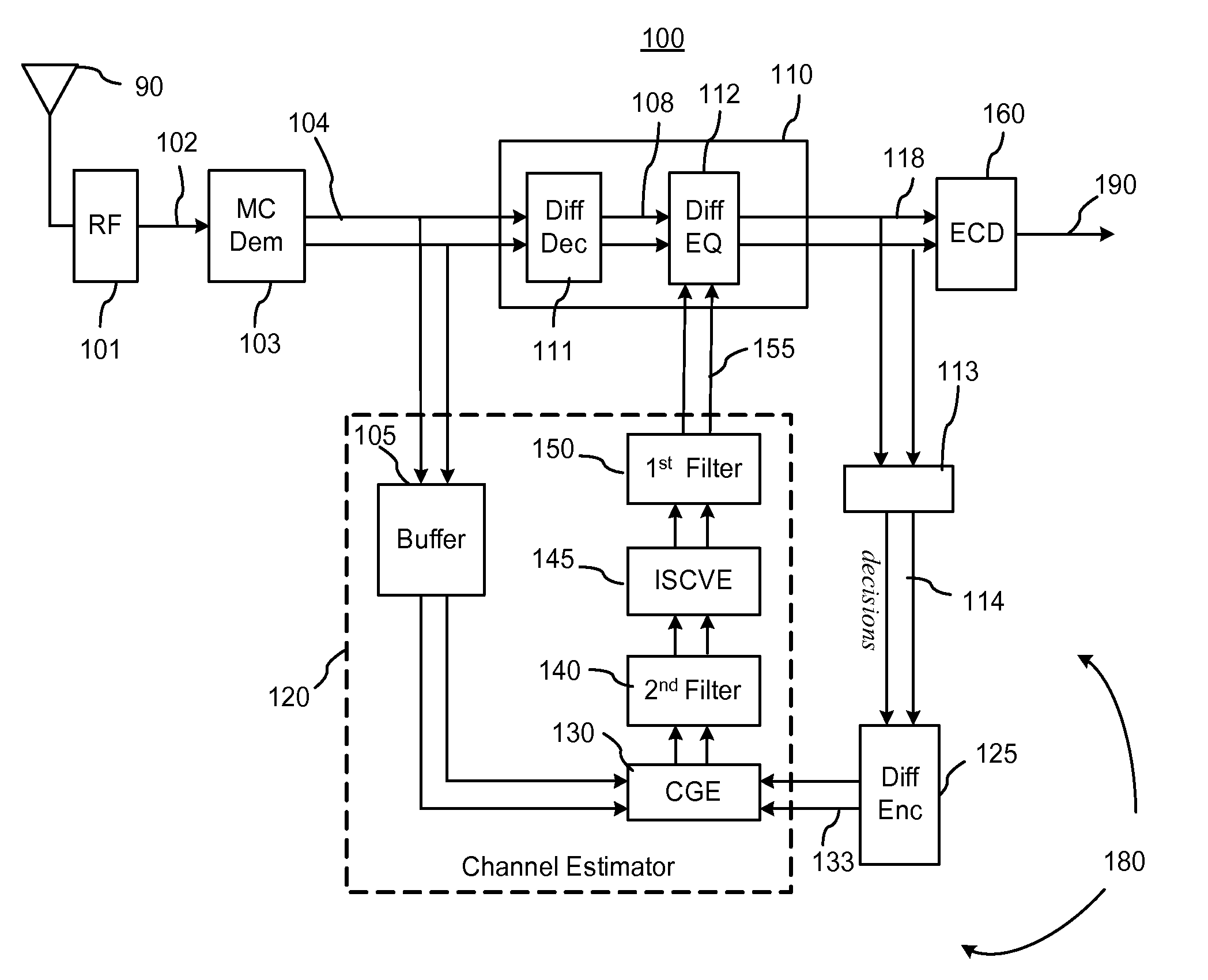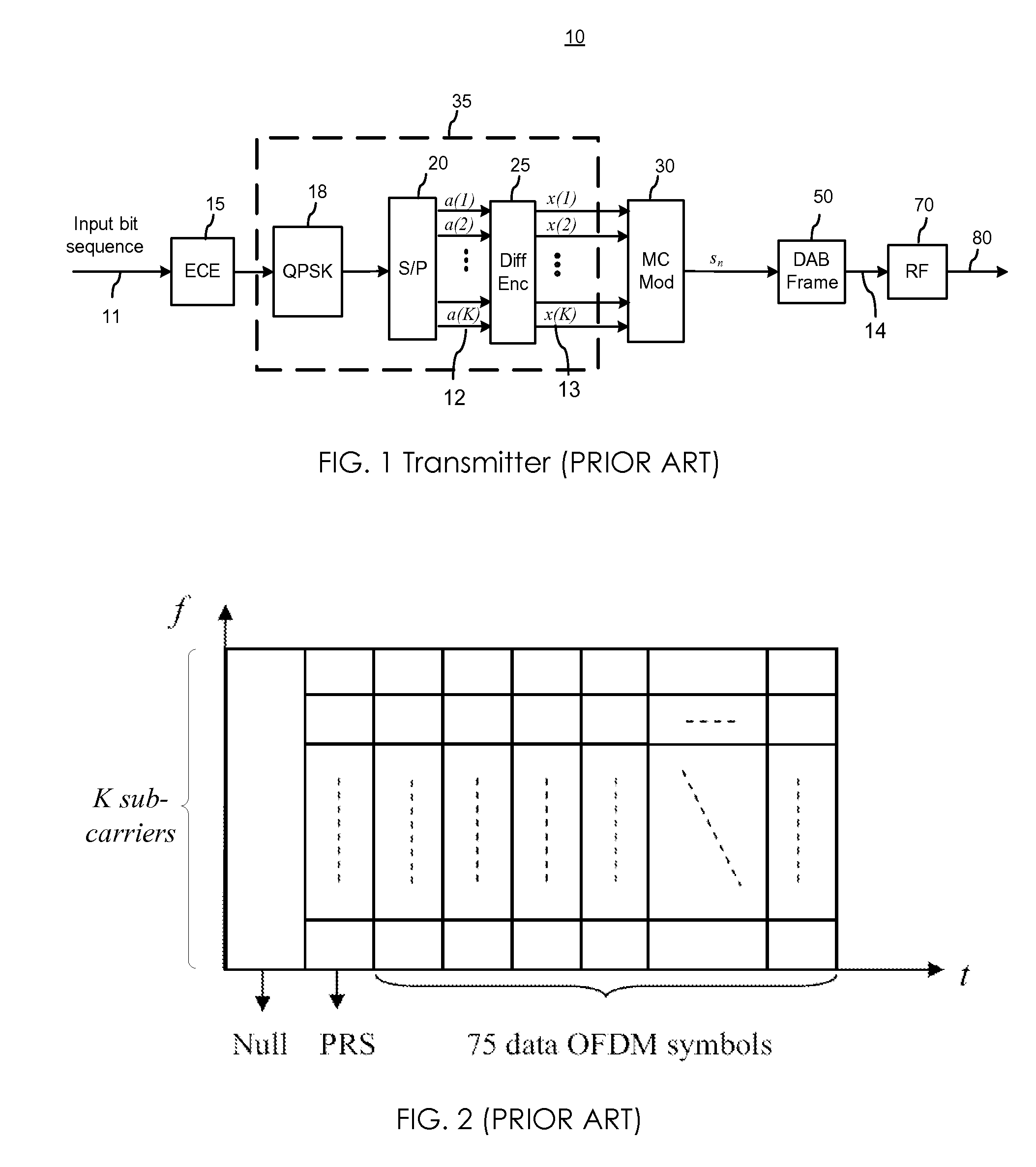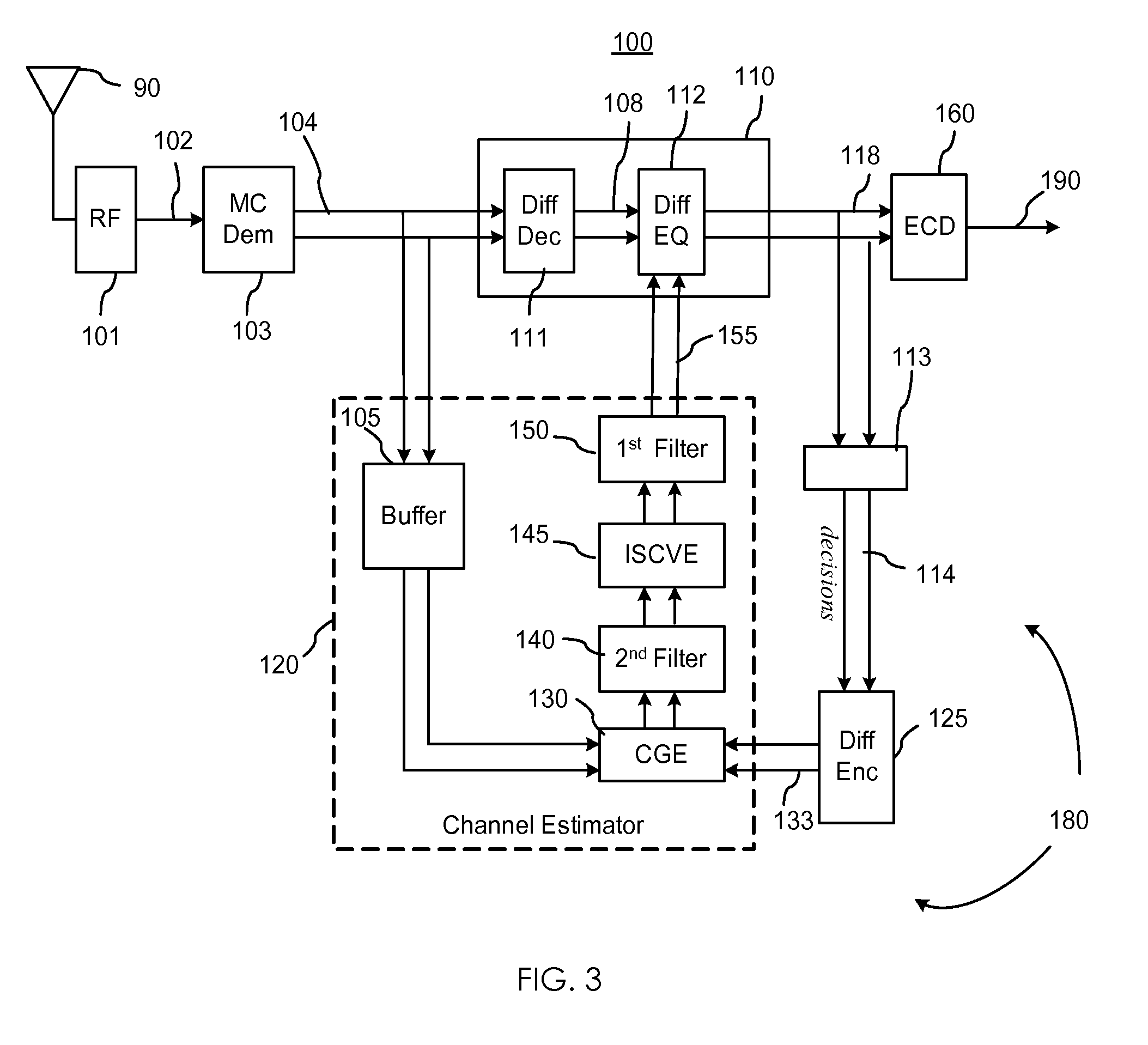Receiver for differentially modulated multicarrier signals
a multi-carrier wireless and receiver technology, applied in the field of multi-carrier wireless receivers, can solve the problems of significant performance degradation of differential detection, loss of orthogonality of ofdm subcarriers, and two drawbacks of the conventional ofdm system in fast-time-varying channels
- Summary
- Abstract
- Description
- Claims
- Application Information
AI Technical Summary
Problems solved by technology
Method used
Image
Examples
Embodiment Construction
[0038]The instant invention provides a method for receiving a differentially modulated multicarrier (DMM) signal from a fast fading communication channel, and a receiver implementing this method. The receiver utilizes an iterative decision-directed differential detection (iD4) technique for extracting transmitted data from the received DMM signal with a reduced error rate, and is referred to hereinafter as an iD4 receiver or an iD4-based receiver; it employs an iterative decision-directed estimation of inter-symbol channel variation to equalize the received DMM signal. The invention will be described hereinbelow with reference to exemplary embodiments thereof, some of which may be geared towards OFDM transmission systems; in these embodiments, the DMM signal may be referred to as the OFDM signal. However, the invention is not limited to receiving OFDM signals and encompasses receivers and associated methods for receiving other types of differentially modulated multicarrier signals. ...
PUM
 Login to View More
Login to View More Abstract
Description
Claims
Application Information
 Login to View More
Login to View More - R&D
- Intellectual Property
- Life Sciences
- Materials
- Tech Scout
- Unparalleled Data Quality
- Higher Quality Content
- 60% Fewer Hallucinations
Browse by: Latest US Patents, China's latest patents, Technical Efficacy Thesaurus, Application Domain, Technology Topic, Popular Technical Reports.
© 2025 PatSnap. All rights reserved.Legal|Privacy policy|Modern Slavery Act Transparency Statement|Sitemap|About US| Contact US: help@patsnap.com



